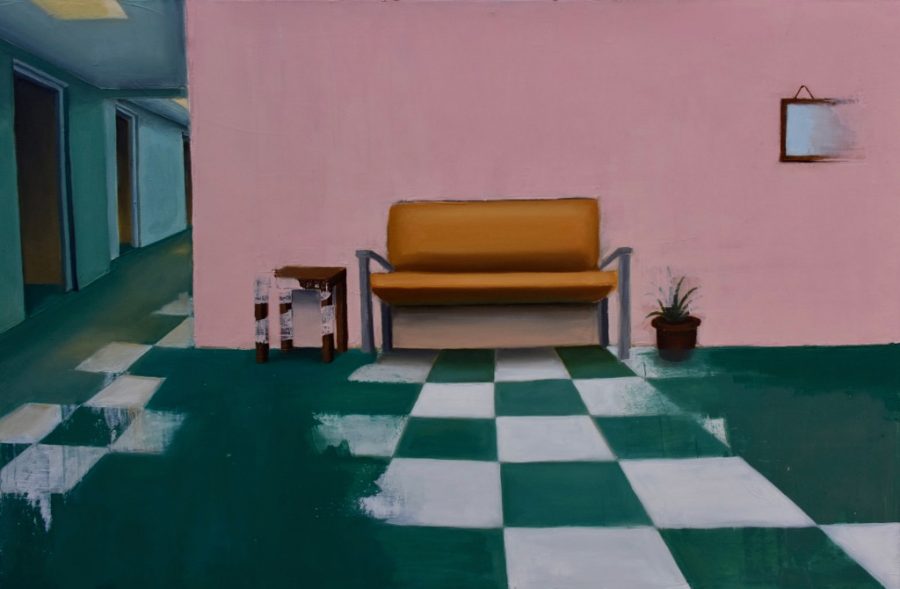Scholastic Super Stars
Three Parker students take home art and writing awards
The Scholastic Corporation annually hosts the Scholastic Art & Writing Awards, which awards public, private, or homeschool students in grades 7-12 from the US, Canada, or American schools abroad for excellence in visual and literary art submissions. Three of this year’s winners are from Parker– senior Kaitlyn Stansbury, senior Emerson Holloway, and unior Sarah-Jayne Austin. They discussed the Scholastic Awards, including their submissions, their creative processes, and the significance of the contest.
What are the Scholastic Awards?
Stansbury: “They are regional and national awards given to young artists and writers. You send in your artwork or writing, and you see if you get a Regional Award. If you get a Regional Gold Key, then you can get a Silver or Gold National Medal.”
Holloway: “You submit art or writing pieces that you’re really proud of, and they fall into certain categories that you can submit to. I think it really allows students to showcase their abilities in things that they’re passionate about.”
On the Scholastic Awards website, each category, whether art or writing, has a description detailing what types of pieces should be submitted. There are also specific examples of submissions: for the fashion category, examples are (including but not limited to) fully-realized articles and outfits, sketches, tech packs, jackets, dresses, shirts, gowns, scarves, hats, bags, belts, shoes, as well as experimental designs, wearable art, and work made from found materials.
There are 17 art categories, 11 writing categories, and one other category for “work that challenges the boundaries of the Scholastic Awards’ current categories.”
There are four Regional Awards: Gold Key (which is then considered nationally), Silver Key, Honorable Mention, and American Visions & Voices Nominees. For the last award group, five Gold Key-winning pieces from each region are picked as nominees for the American Visions & Voices Medals, which is a National Award group. The other National Awards are Gold Medal, Silver Medal, Gold Medal & Silver Medal with Distinction Portfolios, and Special Achievement Awards.
Why and how did you decide to submit your work?
Stansbury: “I put them on my resume for art schools, so it looks really nice for them. I started sophomore year, so I’ve been building that up, and it looks really good.”
Austin: “I wanted to submit something somewhere, so I was looking at competitions online, and this was the first one that came up. This one also allows you to enter a bunch of stuff — I also had photography. You can enter multiple things, which is a nice bonus.”
Holloway: “It was my second week at Parker, and Mr. Laufer forwarded an email to nine or ten kids, and all it said was ‘FYI’ with an exclamation point. It was all this information about the awards, and I had never heard of it. But I was like, ‘Why not? It’s my senior year, might as well go for it.’”
Every year, Scholastic partners with hundreds of visual and literary arts organizations in the US to bring the awards to local communities. For 2018, students submitted almost 350,000 pieces of art and writing to the Scholastic Awards.
What was the process? What did you submit?
Stansbury: “I make a bunch of art over the summer at Interlochen [Arts Camp], and I pretty much submitted all of that. Since I do a political cartoon every month, I have a lot, so I submitted a portfolio of political cartoons. When you’re a senior, you can submit portfolios. I got a National Silver.”
Austin: “I submitted a bunch of photography, which did pretty well. I submitted two writing pieces, and the one that got the Gold Key then got the Gold Medal. Submitting is pretty easy — it’s on a site. You have to do it by a certain date, and they let you know. It was a piece that I wrote in Mr. Laufer’s class during his Writing Marathon, when he doesn’t teach, and we just write.”
Holloway: “You go to their website and make an account, and you can submit for art or for writing. I wrote a personal essay. There are different categories of writing that you can submit to. You have to get a teacher and advisor signature and say which school you go to, and other than that it’s a simple uploading process.”
Each participant must upload their work to their personal Scholastic Awards account, which is created from the Scholastic Awards website. Submission forms signed by a parent or guardian and an educator must be mailed to the Affiliate Partner in his/her local region.
Submissions are judged by “luminaries in the visual and literary arts” based on originality, technical skill, and the emergence of a personal voice or vision.
What was your reaction when you found out that you won an award?
Austin: “I didn’t know for a month that my one piece had gotten a Gold Key because they didn’t properly mark it. They hadn’t tagged my piece to my school, so I didn’t know until I found the list of Gold Key winners, and I was on there. It was a staggered finding out.”
Stansbury: “Yeah, that happened to me last year. Mr. Laufer had to tell me two weeks after they came out. It’s always really cool to have someone other than your mom judge your art and say it’s good, and give it a score. To have national recognition is really surreal… last year, I got a National Gold for a political cartoon, and I had to send it out to them, but I don’t know if it’s ever coming back.”
Holloway: “I was not expecting it at all. I really just did this for fun. I like writing creative nonfiction and essays. Something else that’s on the website are past winners, so you get to look through their materials. A lot of the personal essays were telling a story, or a lesson that they learned, and I wanted to write something different than that. So I wrote about the concept of happiness and how that’s very subjective. I was super surprised but also really happy — I told my advisor and English teacher.”
What’s next [upcoming events for the Scholastic Corporation]?
Austin: “I’m not going because the national award ceremony is during prom. The regional one was in Iowa, and the national one is in New York. The national one is really cool.”
Stansbury: “Yeah, last year I didn’t go, but they had celebrity speakers.”
Holloway: “Everybody is collectively honored in March, and I didn’t go to that, but I got a letter in the mail. It looked like a nice time. It’s cool because it celebrates everyone’s work in the Chicago area, so everybody comes together.”
There are three events held in New York City (NYC) in June to honor the medalists and their mentors: a National Ceremony at Carnegie Hall (past guests included Tim Gunn, Alec Baldwin, and Whoopi Goldberg), a National Exhibition, where young artists and writers who received top honors have their work displayed in NYC, and a student showcase, which includes a “Maker Prom,” student talks, art-making workshops, open mic sessions, and film screenings.
What did you learn? What advice do you have for future applicants?
Austin: “Start early. It was the week that they were due, and I knew I was submitting, but I hadn’t really looked yet, and then I was in crisis… there were a bunch of things that people had to sign. Once you know you’re gonna do it, start early, because it means you won’t be trying to do school and figure out a not-so-simple online platform.”
Stansbury: “I think it’s worth the money. Even if you think you’re not gonna get an award for something, you might be surprised. I was definitely surprised about things that I got awards for. It’s worth submitting, and just trying and putting yourself out there, even if you think your stuff isn’t good enough because you might get something.”
Holloway: “This is definitely something to do if you want to do it. Don’t feel pressured to do it at all. It was a really fun project. I did it because I wanted to and because I like writing. It was really fun, and I think if you enjoy writing, or just want to produce something, or submit something that you’re proud of, it’s a really wonderful feeling to have that recognized. Even if you don’t win anything, your piece was still read by pretty qualified people.”








